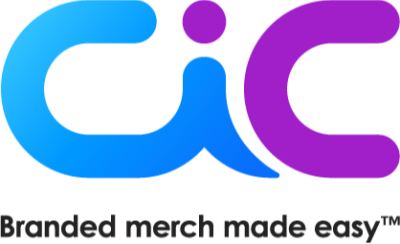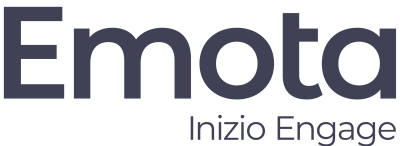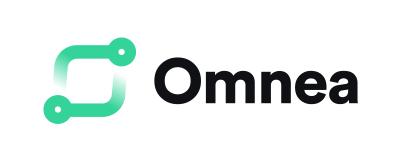Whitepaper & Video Center

Simplify Risk Management Across Procurement Processes
The growing pace of business, rapid economic changes, and increased regulatory requirements call for supplier risk management to become a natural part of the procurement process to avoid damage to your revenue or reputation. Yet supplier risk management remains tough to do because risk due diligence tends to be a sporadic process. Manual risk scoring, which is costly and time consuming, makes it almost impossible to stay well informed about suppliers or market signals. And with risk information being fragmented across processes and systems, unintentionally engaging at-risk suppliers becomes more likely, which may lead to serious supply chain disruptions. Protecting your organization against supplier risk means that your buyers need to be able to make smart, safe, informed decisions during supplier selection, qualification, and segmentation. And they need to be able to detect early warning signals and proactively monitor risks for each supplier engagement during the procurement process.

Competitive Differentiation
The gap between “Buying at Home” vs “Buying at Work” has never been larger than it is today. While B2C eCommerce continues to evolve at a hyper-accelerated rate, enterprise procurement solutions haven’t really evolved much since 2002. Corporate procurement is at a crossroads. They have invested heavily in technology solutions intended to drive efficiencies only to realize that they are no closer to achieving the goal of maximum spend under management. Procurement needs to be maniacal about the user experience and ensure that Procurement deploys tools that users will actually adopt. With e-commerce sales continuing to be a major part of retail buying, end users expect a similar experience when they do their purchasing at work. Users want to have an experience like they get at Amazon, Airbnb, Home Advisor, and Angie’s List, among others. That experience starts with a strong search capability and an overall process that occurs within a single site, i.e. without punching out to another site to complete the purchase.

The 2019 ProcureCon CIO-CPO Study
New for 2019, this year's edition of the CIO CPO report focuses on the strategic changes procurement is putting into place in order to meet their IT peers half-way. Strategies around risk mitigation, the development of expertise, and AI and ML integration are all looked at in this exciting new edition!
ProcureCon Digital Summit - June 2019
Let's get digital!At ProcureCon Digital Summit, we'll give you the tools you need to transform your organization into a digital powerhouse.Sign up for this live digital event and get the scoop.Psssst... you don't even have to attend the live sessions if you don't want to! You'll get the on-demand recording as long as your name's on the list.

Turning Digital Disruption into Procurement Innovation
In this new report, you'll learn about how Procurement leaders are turning the imperative to digitally transform into a springboard towards opportunity. Don't miss these insights taken from a live webinar and distilled into this easy to digest report! Download your copy now.

Aravo Is A Leader Among Supplier Risk And Performance Management Platforms
Aravo started in 2000 as a pioneer of supplier information management for large global enterprises (GE was an early customer) and has since evolved into a comprehensive, flexible SRPM platform. Large, complex global enterprises should consider Aravo for its configurability to combine central data collection with business-unit-level risk assessment. It has good functionality in all parts of SRPM with superior capabilities in risk assessment and orchestration of performance improvement. Aravo’s main drawback is that it is a standalone tool, not a full sourcing suite, which limits its market: Many enterprises will prefer an incumbent’s SRPM module if it is good enough. Another concern is that it is smaller than many of its rivals, so it may struggle to invest enough in ongoing innovation. There is a risk that competitors will catch and overtake Aravo in key areas, such as the use of AI for real-time risk monitoring.

It All Starts With Your Procurement Data
The beginning of any journey in indirect procurement is capitalizing on your procurement data to understand organizational performance as well as to shape both goals and opportunities. Historically, indirect purchasing has been responsible for the procurement of non-production materials (NPM) and services. Unlike direct purchases that have a relatively constrained supplier base and a controlled or planned use of parts, indirect procurement has almost an infinite variety in parts and supplies that can be bought from tens of thousands, if not hundreds of thousands of suppliers. With so many supplier options out there, how does an organization stay on top of their indirect procurement? The answer: data.

Risk Monitoring: Riding the Wave of Change
Are you ready to ride the wave of change? This new report from Lexis Nexus will show you how to improve your risk monitoring and stay up to date on the market changes set to impact your organization the most.

Supplier Risk Management in Direct Procurement
Direct procurement risk must be avoided in order to circumvent serious business disruptions. In today's volatile market, that can be easier said than done. In this new report, GEP shows you how you can develop best in class protection for your direct procurement strategy.

Supplier Management in a Turbulent Global Economy: Studying Challenges Impacting Direct and Indirect Procurement
This new research study contrasts the challenges facing both direct and indirect procurement within the context of global business. You will discover how your peers are managing their supplier diversity and mitigating risk while ensuring business continuity.

How to Improve Travel Management Cost-Savings
The days of quick wins and sweeping savings in travel management are probably over. If you’ve not already been through multiple cost-saving initiatives, you’re the exception rather than the rule. So when the pressure is on to drive further cost savings in your travel programme, what can you do?In this guide, we’ll take you through ideas to reframe the cost-saving conversation at a strategic level, as well as techniques for budgeting to maximise your cost controls and tools to help you benchmark your travel budgets.

Procure to Pay Implementation in 8 Weeks: Customer Success Story with Maxim Healthcare Services, Inc.
Procure-to-pay, or P2P is an area that increasingly Procurement and Finance leaders want to digitize end-to-end. Best-in-Class companies do this in order to improve the overall efficiency and experience of the process but also to capture accurate data. One of the key factors that determines the success of a P2P initiative is the level of adoption by internal users as well as suppliers.

Scout Anadarko Case Study
In a sentence, Anadarko provides the energy to fuel modern life all over the world. The public company (NYSE: APC) is one of the world’s largest independent oil and natural gas exploration and production companies. It was founded in 1959 in Texas – where it still maintains its headquarters today – but has since expanded across North America, South America, Europe, Africa, and Asia Pacific.Like many commodity-driven industries, the oil and gas business is cyclical by nature. This has become particularly pronounced in recent years, as oil prices have become increasingly volatile. To successfully manage through this level of volatility, Anadarko relies on an agile supply chain managed by a high-performing sourcing team.“For Anadarko, sourcing is really front and center when it comes to effectively executing in rapidly evolving market conditions,” notes Aaron Rubinstein, Manager of Shared Services & Technology, Global Supply Chain at Anadarko. “The supply chain must work hand-in-hand with engineering, finance, and operations to achieve the budget and planning targets that the organization has set forth for the year. We use the sourcing process as the mechanism to execute on that, but it requires close coordination and collaboration across the enterprise.”As Rubinstein notes, “We were looking for a tool that gave us that flexibility and adaptability to be able to quickly carry outsourcing initiatives in response to changes in the market. We also needed something that would bridge the gap between sourcing and other departments across the organization.” Anadarko had heard that Scout checked these boxes, so they launched a pilot to put it to the test.

Case Study TRC Global Mobility
A TRC Fortune 500 client decided to review its domestic mobility policies to ensure they were both competitive and cost-effective. Knowing that its current policy was more generous than others in the industry, and looking for ways to cut costs but still maintain a high-quality employee experience, this company turned to TRC for assistance.Drawing on its industry expertise and data, TRC immediately began benchmarking the client’s policies against current best practices. Our client company was unusual it that it utilized a Guaranteed Buyout home sale program for all qualifying homeowners. In the last decade, the GBO has become a much less common benefit, and if it is offered at all, it is usually only to executive/VIP transferees. The booming US economy and a generally strong real estate market present an even more compelling opportunity to limit the use of GBO/AVO benefits without unduly burdening relocating employees. (This is also true of loss on sale and mortgage interest differentials, which were important tools during the recession.) TRC audited this client’s home sale files and found that for the home sale benefit alone, the average spend per file was $36,631—nearly half of the overall total average cost per file of $79,649. Further analysis showed that our client could adjust other benefits to be more in line with industry standards, including temporary accommodations, the household goods shipment, home finding and home purchase.

Four Attributes of Win-Win Supply Chain Relationships
Researchers, including Sengun Yeniyurt, Ph.D., Associate Professor of Supply Chain Management and Marketing Sciences at Rutgers Business School, studied buyer and supplier relationships in the U.S. automotive industry for a twenty-year period. The team collected data for both buyers and suppliers, but focused their research findings on the suppliers’ perspective. Like any relationship, two parties learn the most about one another during challenges. For this reason, data was gathered during close working relationships where suppliers were co-developing products with their buyers. What the researchers identified were not “four easy ways” to build a relationship, but instead, four interlinked attributes that define successful supply chain relationships. Not surprisingly, the attributes are qualities of all successful relationships — business or personal.

CPO Study 2017: Exploring the Role of Technology in Procurement Strategic Transformation
Click the image on the left to download now!The role of procurement is changing, though the core commitment to creating value that drives its evolution remains the same. In a large part, these changes are being enabled by developments in the technology procurement has at its disposal, allowing CPOs to introduce automation, self-service buying, and detailed analytics that provide more easy-to-use tools that capture larger amounts of data. For these reasons, a center-led model is emerging as the preferred organizational structure for procurement within global organizations. In the midst of these structural changes, the role of the CPO itself is being imbued with the authority to influence the larger strategies of the businesses they serve. With increasingly detailed analytics providing insight on patterns of spending, streamlined tools for processing routine purchases, and invigorated relationships with other department heads, CPOs are entering a period where they are more influential than ever before.Key topics include:Centralization of procurement may not mean scrutiny of purchases made across a global organization; rather, a Procurement Center of Excellence now serves as a strategic command center and provider of consultative value optimization, while recognizing that certain commodities cannot be effectively globalized.Procurement is looking forward to greater levels of automation, Big Data utilization, and more internal client-friendly sourcing tools in order to transcend the tactical focus of their roles, fully dedicating themselves to strategy.

The 2016 ProcureCon Indirect East Benchmark Report
The 2016 edition of the ProcureCon Indirect East Benchmark Report is here! This report, produced in cooperation with Bidenergy, SAP Ariba, and Software Asset Advisors, covers cutting edge topics for procurement including: - Cutting into non-managed, one-off buying behaviors - Managing negotiations and avoiding audits by software giants - Developing new category management strategies for energy Click the image to the left to download now!

CPO Study 2015: Gauging the Priorities and Goals of Chief Procurement Officers
This research study allows the reader to analyse the Priorities and Goals of Chief Procurement Officers! They discuss the following topics: Where is procurement headed? The next generation of procurement talent Managing contractor relationships and minimizing risk How technology is evolving The rise of SaaS solutions What is causing disruption around procurement?Click on the image to get this information today!

The Director's Report: ProcureCon Indirect West 2016
Over the past several years, the procurement role has developed well beyond its original function. In the past, procurement was tasked with the general sourcing of specific goods and services for their companies. Today, the role has a hand in the overall cost savings – through financial oversight and cross department organization. Procurement practitioners are no longer limited to looking at savings with a narrow focus – now you’ve been tasked with seeing how the rest of the company can benefit from your skills. Internally, procurement teams found the best way to ensure success would be to consolidate the goods and service across departments where possible. This would work to keep costs low while removing excess or redundant expenditures. In doing so, key stakeholders through the company would be on the same page in terms of procurement strategy and execution; they had to be since the good and services had to work for them. However, this was relatively short lived, as companies saw more growth as the recession ended. Read more of this report to see a more in-depth analysis. Click the image to the left to download this report today!
Want even more reading material? View whitepapers and reports from our 2018 event.
2018 Media Center




























